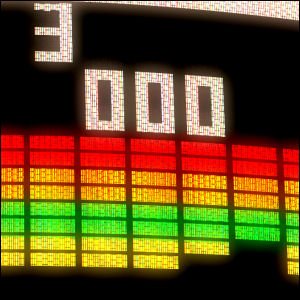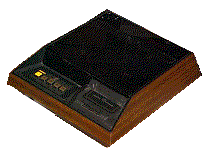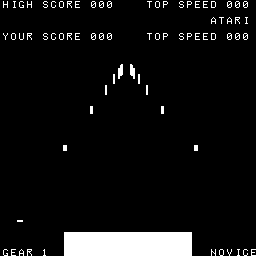 Atari introduces a new arcade game, Breakout, which takes the play mechanics of Pong, turns them on one side, and turns the game into a single-player endurance trial. Assigned to junior Atari employee Steve Jobs, Breakout is actually completed by Jobs’ friend Steve Wozniak, though the circuitry for the game is redesigned when Atari’s engineers can’t get their heads around Wozniak’s incredibly compact, efficient design, which reduces the number of logic circuits to a bare minimum. Jobs and Wozniak later approach Atari with a design for a personal computer, and are turned down; that design later becomes the first Apple Computer.
Atari introduces a new arcade game, Breakout, which takes the play mechanics of Pong, turns them on one side, and turns the game into a single-player endurance trial. Assigned to junior Atari employee Steve Jobs, Breakout is actually completed by Jobs’ friend Steve Wozniak, though the circuitry for the game is redesigned when Atari’s engineers can’t get their heads around Wozniak’s incredibly compact, efficient design, which reduces the number of logic circuits to a bare minimum. Jobs and Wozniak later approach Atari with a design for a personal computer, and are turned down; that design later becomes the first Apple Computer. ![]()

 Coleco, a toy company best known for its air hockey tables, releases its first video game console, the Coleco Telstar. A self-contained unit capable of playing three variants of video tennis, Telstar retails for roughly half the price of Atari’s Pong console, and Coleco sells over a million units of Telstar in various guises and case styles through the end of the decade. In the early 1980s, Coleco begins development of its own programmable, cartridge-based successor to Telstar, which will reach the market in 1982 as Colecovision.
Coleco, a toy company best known for its air hockey tables, releases its first video game console, the Coleco Telstar. A self-contained unit capable of playing three variants of video tennis, Telstar retails for roughly half the price of Atari’s Pong console, and Coleco sells over a million units of Telstar in various guises and case styles through the end of the decade. In the early 1980s, Coleco begins development of its own programmable, cartridge-based successor to Telstar, which will reach the market in 1982 as Colecovision. A major breakthrough in an industry that was previously dominated by expensive, bulky consoles that could only play a handful of games each, Fairchild introduces its Video Entertainment System, the first programmable video game system. Though it has several built-in games like its predecessors, the Fairchild system allows owners to add new games by purchasing “Videocarts” – roughly the size of 8-track tapes – containing additional games. Fairchild later renames its VES console Channel F to avoid market confusion with Atari’s VCS (Video Computer System), which doesn’t arrive on the scene until the following year.
A major breakthrough in an industry that was previously dominated by expensive, bulky consoles that could only play a handful of games each, Fairchild introduces its Video Entertainment System, the first programmable video game system. Though it has several built-in games like its predecessors, the Fairchild system allows owners to add new games by purchasing “Videocarts” – roughly the size of 8-track tapes – containing additional games. Fairchild later renames its VES console Channel F to avoid market confusion with Atari’s VCS (Video Computer System), which doesn’t arrive on the scene until the following year. Atari introduces its first-person driving game
Atari introduces its first-person driving game  Midway introduces its own first-person car racing arcade game,
Midway introduces its own first-person car racing arcade game,  One of the very first first-person space games is introduced to arcades by Atari. Despite its flickery graphics,
One of the very first first-person space games is introduced to arcades by Atari. Despite its flickery graphics,  Launched just prior to Christmas 1976 (so late, in fact, that most consumers aren’t aware of its existence until early ’77), RCA takes its only step into the video game world with the underpowered
Launched just prior to Christmas 1976 (so late, in fact, that most consumers aren’t aware of its existence until early ’77), RCA takes its only step into the video game world with the underpowered